Mosquito bites are distressingly familiar. But, unfortunately, they’re not the only menace threatening to wreak havoc with your summer. Here’s how to protect yourself against the most dangerous bugs.
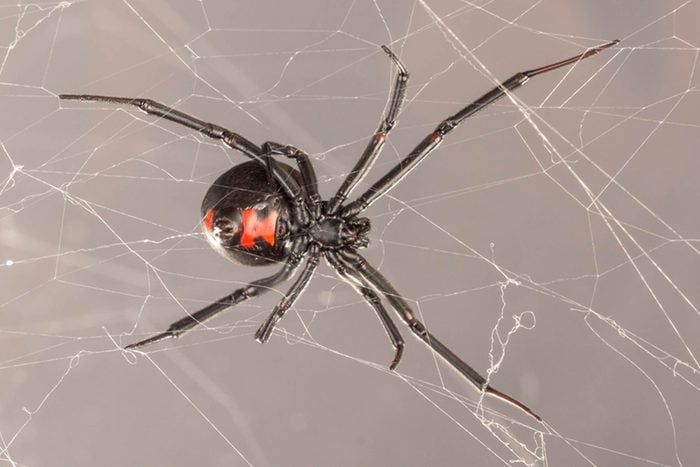
Black widow spider
Black widow spiders are—appropriately enough—black with two reddish triangles on their back. Roughly the size of a paper clip, these poisonous bugs have venom 15 times stronger than a rattlesnake’s, says Brittany Campbell, PhD, an entomologist and research scientist at the National Pest Management Association. That venom could cause muscle aches, nausea, and trouble breathing. Although Campbell says fatalities are rare, female black widows might bite more often than males as a defense.
How to protect yourself: Campbell says people can reduce their risk of black widow spider bites by reducing clutter in basements and garages, eliminating favorite hiding spots for these spiders. And make sure to wear gloves while cleaning.
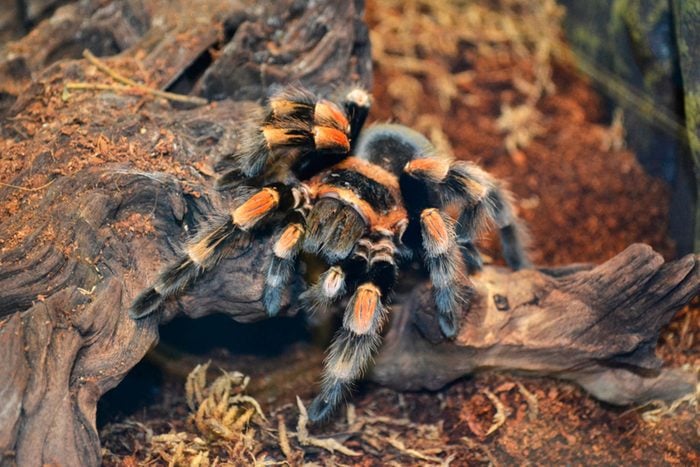
Tarantulas
With a lifespan of nearly 30 years, tarantula spiders can grow to almost the size of a personal pizza (yes, really!). The good news: Tarantulas are only “mildly venomous and the species in the United States is considered harmless,” says Stoy Hedges, a board-certified entomologist and member of the Pest Management Professional Hall of Fame and poisonous bugs expert. Though their venom isn’t deadly (like its relative, the wolf spider), it can cause rashes and pain at the biting point. That’s partly why you shouldn’t ignore spider bites or these seven other bug bites.
“If a bite occurs, localized pain will likely occur and possibly localized swelling,” says Hedges. “Seek medical attention should pain or swelling be severe or if you experience a significant allergic reaction.”
How to protect yourself: The best way to protect yourself against tarantulas is to keep them away as much as possible. Like black widows, tarantulas love small, dark spaces. So keep things neat, clean, and organized. And wear protective clothing while working in any hot spot for spiders. “If you come across a tarantula in a garage, shed, or on a patio, place a plastic container over the spider then slide a piece of cardboard underneath slowly, trapping the spider inside,” suggests Hedges. “Then relocate the spider to an area away from the home.”
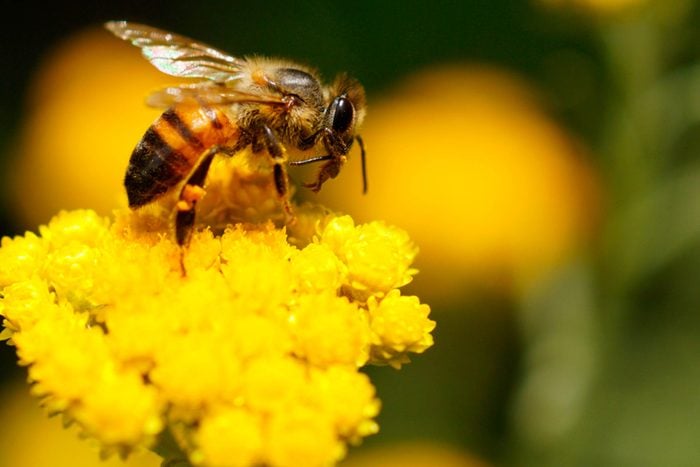
Africanized bee
Africanized “killer” bees look so much like European honeybees that the only way to tell the two apart is to measure their bodies, says Campbell. These bees are slightly smaller and have a golden color with darker bands of brown. Although Africanized bee venom isn’t more dangerous than regular honeybee venom, the former tend to sting in greater numbers. If they attack you, run quickly to shelter in a zig-zag pattern, suggests Campbell.
How to protect yourself: You can avoid attracting bees to certain areas by keeping both food and garbage in sealed containers. Also, rinse out food containers before throwing them away. And avoid wearing dark colors, floral prints, loose-fitting clothes, and sweet-smelling perfume or cologne to avoid attracting bees, Campbell says.
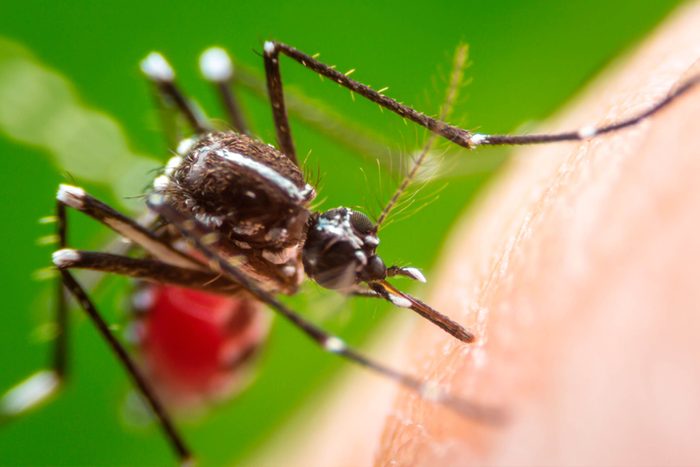
Mosquitoes
There are about 170 types of mosquitos in North America alone. Some of the most dangerous ones—the Culex mosquito, the Asian Tiger mosquito, and the Yellow Fever mosquito—spread diseases such as malaria, yellow fever, West Nile virus, and Zika, among others, Campbell says.
How to protect yourself: “Wearing an insect repellent containing DEET or another EPA-registered ingredient is the best way to prevent mosquito bites,” Campbell says. It’s also essential to prevent mosquito breeding grounds around your home since they can lay eggs in as little as half an inch of water. Mosquito repellent works well because of the smell, and that has to do with why certain people attract mosquitoes more than others.
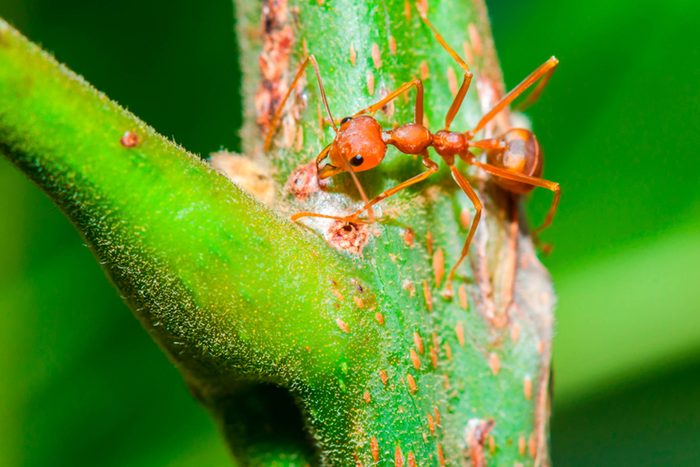
Red fire ants
Red fire ants are more of a dark reddish-brown and have six legs and antennae. “They get their common name from their ability to inflict painful bites and stings,” Campbell says. This could also equal an allergic reaction in some people.
How to protect yourself: Stay far away from their telltale mound nests. They usually nest in the soil near structural foundations or in landscaping, according to Campbell. They are also on golf courses, at picnic grounds, and at playgrounds. And although these ants are often outside, they could get inside the home through HVAC systems or AC units, says Campbell. To prevent red ants from getting into your home, seal all internal and external cracks and crevices. Read how this diabetic woman nearly lost her leg due to an ant bite.
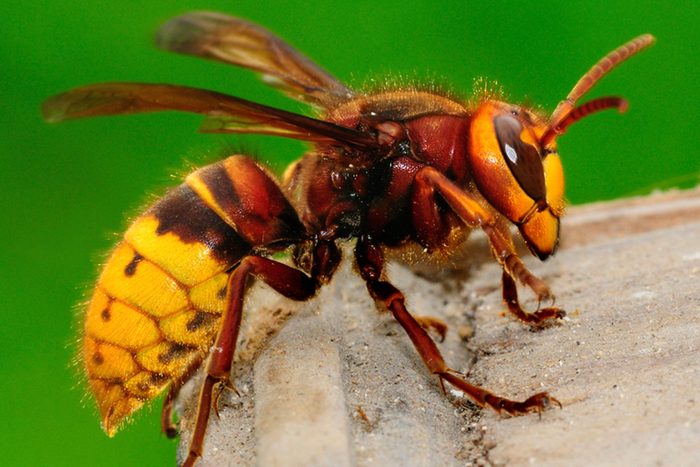
Wasps
There are a few different species of paper wasps. They are mostly brown with some yellow, but each has various bands of color that differentiate them. No matter the type of paper wasp, they will sting if you disturb their nest or somehow threaten them. “Loud vibrating equipment such as mowers and leaf blowers can trigger an active response when these are operated near a nest,” says Hedges. “If you leave them alone, they’re generally uninterested in bothering you; however, a wayward wasp may sting someone happening by.”
For these reasons, most people prefer to have any paper wasp nest located on lower areas of a home treated and removed, particularly if someone in your family is allergic to wasp stings.
How to protect yourself: “Many species prefer to nest in voids so closing up gaps or holes outside the home will prevent nests in these areas,” says Hedges. “Other species locate nests in protected sites under eaves and similar locations. The best way to stop these nests is to be vigilant in the spring and knock down them down to encourage the wasp queen to go elsewhere to build her nest.”
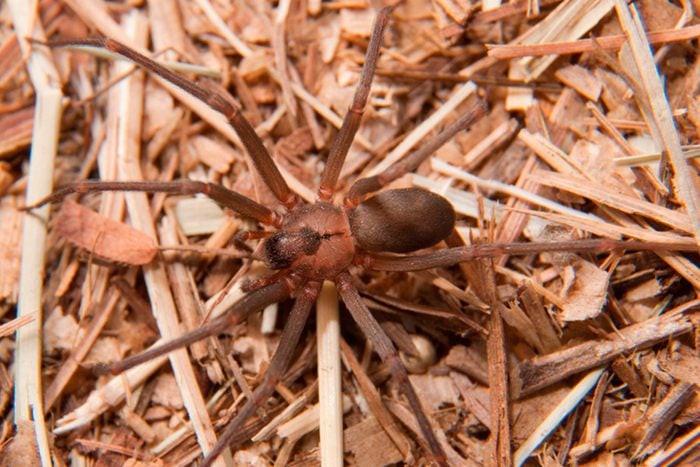
Brown recluse spider
Brown recluse spiders are no longer than a half-inch, have a dark brown violin shape on their body, and they have six eyes in three groups of two. As if that weren’t creepy enough, several studies, including one published in 2017 in JAMA Dermatology, show that a number of deadly skin conditions are often misdiagnosed as brown recluse spider bites.
“Brown recluse spiders are often blamed for biting people in states where this species isn’t found or has rarely occurred, which adds to the confusion surrounding this spider,” says Hedges. “Recluse spiders are rather docile spending most of their time hiding within walls, in attics, crawlspaces, and basements. If you find a spider you suspect is a brown recluse, you should contact a pest control professional.”
Its venom makes puts it in the poisonous bugs family, but it rarely causes much damage because of the small quantity. Bites are usually painless initially; the stinging sensation sets in after about three hours. Most commonly, a white blister will form but usually heals after a few weeks.
How to protect yourself: Preventing brown recluse spiders from entering your home is the main way to avoid bites. Seal any small openings or “cracks around plumbing pipes, behind baseboards, around door and window molding, and around fixtures mounted in the ceiling,” says Hedges. That will “prevent spiders from exiting walls and ceilings holes.” Try not to leave clothes and shoes on the floor. And shake them out before wearing, especially if you store them in the basement, garage, or other dark areas. (Here’s what spider bites look like—and when to call the doctor.)
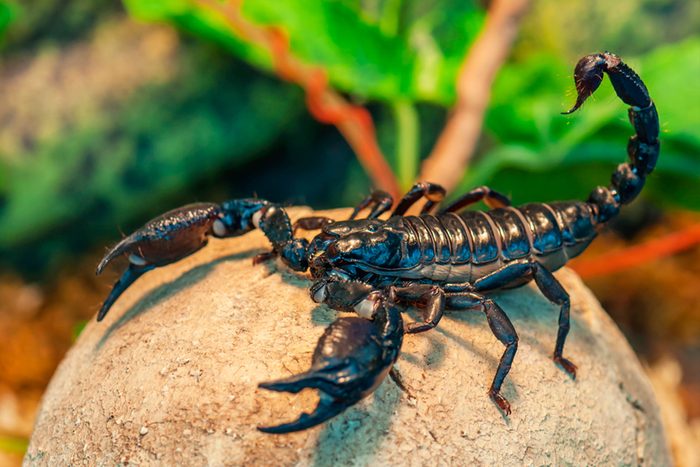
Scorpions
With a crab-like appearance, scorpions are predatory and often come out at night. They like warm, dry climates and are often found in deserts. “Two species of scorpions in this country are considered dangerously venomous and they’re found in the Southwest, from New Mexico to Southern California,” says Hedges. Stings from these poisonous bugs can feel much like a honeybee sting with mild swelling, a rash, or they may be more serious.
How to protect yourself: “Scorpions hide in cracks and voids around houses, as well as under stones and boards,” says Hedges. Besides sealing cracks around your doors and windows, you can protect yourself by eliminating standing water and turning your outdoor lights off at night to ward off crickets—an insect scorpions love to eat.
Indoors, “they may hide in clothing lying on the floor, crawl into shoes or onto beds and furniture,” says Hedges. “To help prevent stings, keep clothes off the floor, store shoes in boxes, avoid using bed skirts and long bed covers that touch the ground. Also, keep beds pulled away from walls and drapes.” (Here’s the best way to treat every type of bug bite.)
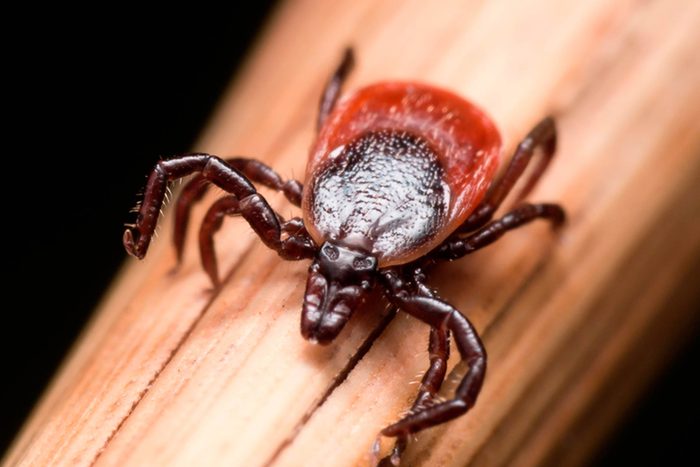
Ticks
Ticks automatically come to mind when you think of the most dangerous summer bugs. But, as Campbell points out, they’re actually arachnids, not insects. In any case, you need to watch out for hard ticks which feed on humans and pets and can carry Lyme disease—which affects joints, along with the heart and nervous system if untreated—as well as Rocky Mountain Spotted Fever, or tularemia. Tickborne diseases could result in rashes, fever, chills, and headaches.
How to protect yourself: Ticks can attach themselves to exposed skin so after time spent outdoors, it’s important to do a full body check for ticks. “Check children for ticks when they come into the house because it takes up to four hours, possibly longer, for a tick to start feeding,” Campbell says. It’s also a good idea to use tick repellents, tuck your pants into socks or boots while outdoors, and keep grass, weeds, and other debris piles low.
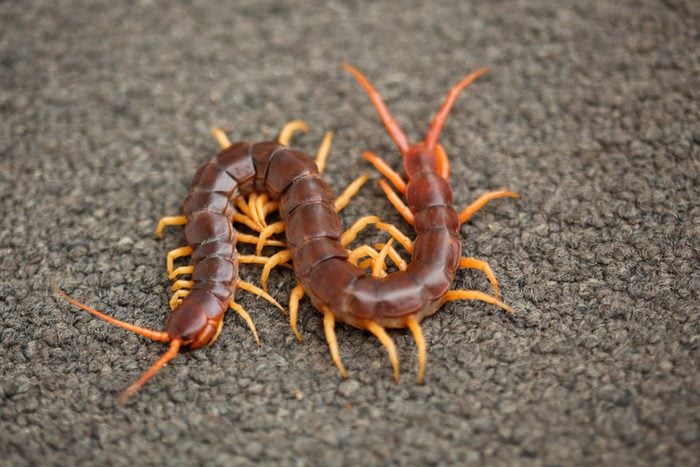
Centipedes and millipedes
Centipedes are easy to spot by their worm-like body and anywhere from 15 to 177 pairs of legs. If you handle them roughly, larger centipedes could inflict a painful bite, says Campbell. Millipedes, meanwhile, can release a foul-smelling liquid that causes skin irritation.
How to protect yourself: Reduce areas of moisture in and around your home to protect yourself from a centipede infestation. Make sure you remove piles of leaves and grass clippings on your property. And seal off cracks where they could enter the home. If you do find one in your house, Campbell says you can get rid of it with a vacuum. Not sure what bit you? Here’s a handy bug-bite guide with photos.
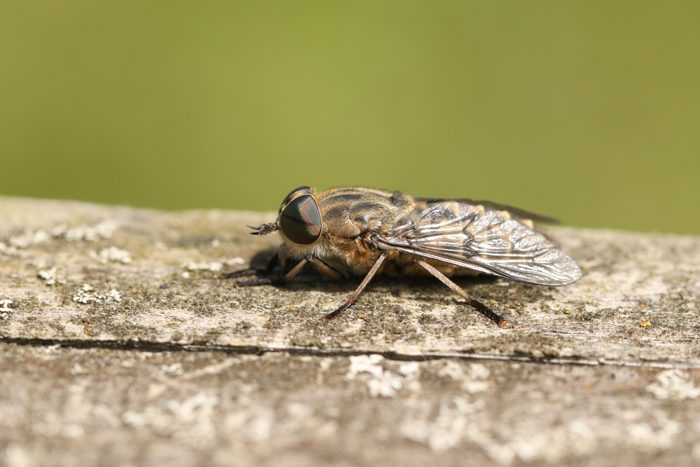
Horseflies
Horseflies have black or gray bodies with large eyes that have green or purple horizontal stripes. You don’t have to worry about male horseflies, but the females do bite. Chances are, however, you won’t come in contact with either. “Though common around buildings located in rural areas and wooded lots, horseflies are not typically a concern,” says Hedges. “They feed on large animals like deer and livestock.”
How to protect yourself: In you live in an area prone to horseflies, “use window screens and keep doors closed to prevent entry,” says Hedges. “While outside, wear light-colored clothing” and insect repellent to protect against bites. Here are some chemical-free bug repellents that actually work.
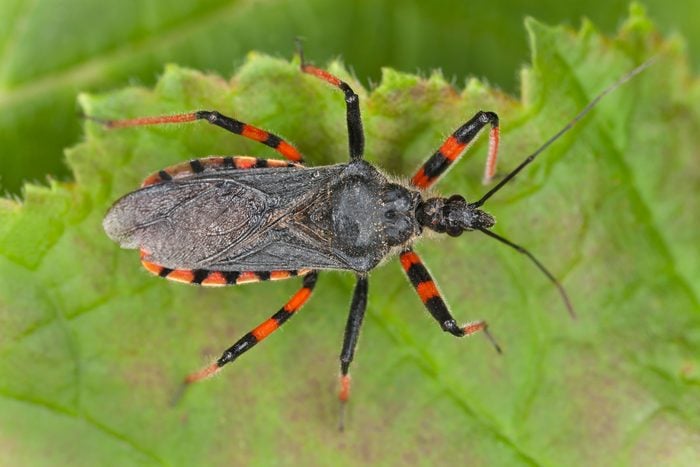
Kissing bugs
Kissing bugs have a head the shape of a cone. They are usually light brown to black in color, although some species have red, yellow, or tan markings on their stomach, Campbell says. Kissing bugs occasionally bite humans in their sleep, and people with sensitive skin could have an allergic reaction. Even worse, kissing bugs also carry a parasite that causes Chagas disease, a systemic infection that can cause swelling, heart problems, and gastrointestinal problems. Nearly 300,000 people in the United States are infected with the parasite, according to the Centers for Disease Control and Prevention (CDC).
How to protect yourself: Again preventing this bug bite starts with keeping kissing bugs out of your home. Homeowners should seal cracks with caulk, install door sweeps, and remove debris piles from the yard, says Campbell.